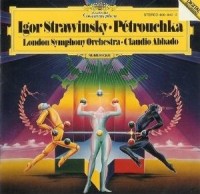
If you’re curious about classical music but new to the genre it can seem overwhelming at first with so many periods, styles, composers and performances to choose from. At Jive Time we’re still learning, but it’s been a fun and rewarding journey. With this guide, we’ll share some of our experience with the classical-curious among our adventurous rock-oriented readers. We began our quest by looking for the similarities to rock music instead of the differences.
Many important composers, including all of the artists featured in this guide, were considered musical rebels in their day. Their controversial ideas, ahead of there time, continue to influence classical, jazz and popular music decades later. Rock began borrowing liberally from classical in the late-60’s, which was a period of intense innovation. The Beatles, the Beach Boys and the Velvet Underground are just three well-known examples of many rock musicians incorporating orchestral interludes, dissonance, and other symphonic elements into their sound. As the sixties grew into the seventies, taste-makers such as David Bowie, Brian Eno, John Cale and Frank Zappa brought classical to the forefront of their work, even dedicating entire albums to the genre. Classical was also a prominent factor in the progressive rock movement and continued to meld in genres as diverse as heavy metal, post-punk, electronic music and in today’s ambient music and post-rock.
Even to the uninitiated there are already many familiar names and music in classical: Everyone will recognize pieces by Bach, Beethoven, Mozart, Tchaikovsky and Prokofiev from film, television and commercials, and countless rock musicians have named electronic pioneers Varèse, Cage and Stockhausen as major influences. While all of these composers demand exploration, this guide will start instead with composers of the early and mid-Modern eras (loosely 1880-1940). Because of these composers’ experimental nature and ability to push boundaries, the five compositions below create a good starting place for those of us weaned on the defiant sounds of rock and punk.
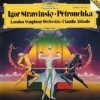 1. Igor Stravinsky (Russia; b.1882, d.1971) Petrushka (1913): Stravinsky’s music is relentless and pulsating, dramatically unyielding, with subject matters that were years ahead socially. Petrushka is a ballet that tells the story of a puppet that comes to life and develops and experiences human emotions. His 1913 ballet, The Rite of Spring about a woman who literally dances herself to death was so eccentric and morose that it sparked a riot on its premier. Petrushka is not as dark but is just as potent and driving both rhythmically and melodically, alternating between explosive crashes of cymbals and brass, flawlessly blending into melancholic flute sections with fluttering dissonant passages of reeds and strings in between. Stravinsky was a true musical rebel and his music reflected his nature.
1. Igor Stravinsky (Russia; b.1882, d.1971) Petrushka (1913): Stravinsky’s music is relentless and pulsating, dramatically unyielding, with subject matters that were years ahead socially. Petrushka is a ballet that tells the story of a puppet that comes to life and develops and experiences human emotions. His 1913 ballet, The Rite of Spring about a woman who literally dances herself to death was so eccentric and morose that it sparked a riot on its premier. Petrushka is not as dark but is just as potent and driving both rhythmically and melodically, alternating between explosive crashes of cymbals and brass, flawlessly blending into melancholic flute sections with fluttering dissonant passages of reeds and strings in between. Stravinsky was a true musical rebel and his music reflected his nature.
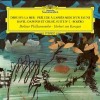 2. Claude-Achille Debussy (France; b.1862, d.1918) Prelude to the Afternoon of a Faun (1894): Debussy, along with his compatriot composer, Ravel, are considered top figures of the French impressionistic movement (Debussy despised the term). Debussy’s music was not as aggressive as Stravinsky’s but equally defiant. Rather than being intense and explosive, Debussy’s music seemed to flow, creating lines that would fluctuate; almost drone like, sprinkled with gentle percussion. Prelude to the Afternoon Faun was based on a poem by Stéphane Mallarme, on describing it Debussy wrote: “The music of this prelude is a very free illustration of Mallarmé’s beautiful poem. By no means does it claim to be a synthesis of it.” Debussy snubbed the conventional structures of the symphony and was not afraid to let his work lay open to the audience’s interpretation. There is plenty to interpret here – in fact it just might change with every listen.
2. Claude-Achille Debussy (France; b.1862, d.1918) Prelude to the Afternoon of a Faun (1894): Debussy, along with his compatriot composer, Ravel, are considered top figures of the French impressionistic movement (Debussy despised the term). Debussy’s music was not as aggressive as Stravinsky’s but equally defiant. Rather than being intense and explosive, Debussy’s music seemed to flow, creating lines that would fluctuate; almost drone like, sprinkled with gentle percussion. Prelude to the Afternoon Faun was based on a poem by Stéphane Mallarme, on describing it Debussy wrote: “The music of this prelude is a very free illustration of Mallarmé’s beautiful poem. By no means does it claim to be a synthesis of it.” Debussy snubbed the conventional structures of the symphony and was not afraid to let his work lay open to the audience’s interpretation. There is plenty to interpret here – in fact it just might change with every listen.
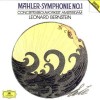 3. Gustav Mahler (Bohemia/Germany; b.1860 d.1911) Symphony #1 (1884-1888): Mahler’s work can take you from heartbreaking melancholy to impending doom only to end up with an uplifting feeling of euphoria-all in one measure. He was a master at creating tension by abruptly switching from quiet to loud passages and intertwining moods too create his visions from these soundscapes. He was also completely unabashed (and critiqued) about bringing his influence by fellow composers and styles from other regions into his work, resulting in pieces that would have sudden tempo changes and harmonies with eclectic instrument combinations. When Symphony #1 was first performed in 1889, it was largely unsuccessful, probably due to its experimental nature, critics and audiences simply did not know how to listen to it, which is exactly what keeps it relevant and vibrant over a century later.
3. Gustav Mahler (Bohemia/Germany; b.1860 d.1911) Symphony #1 (1884-1888): Mahler’s work can take you from heartbreaking melancholy to impending doom only to end up with an uplifting feeling of euphoria-all in one measure. He was a master at creating tension by abruptly switching from quiet to loud passages and intertwining moods too create his visions from these soundscapes. He was also completely unabashed (and critiqued) about bringing his influence by fellow composers and styles from other regions into his work, resulting in pieces that would have sudden tempo changes and harmonies with eclectic instrument combinations. When Symphony #1 was first performed in 1889, it was largely unsuccessful, probably due to its experimental nature, critics and audiences simply did not know how to listen to it, which is exactly what keeps it relevant and vibrant over a century later.
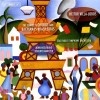 4. Heitor Villa-Lobos (Brazil; b.1887, d.1959) Bachianas Brasileiras (1930-1945): These are more contemporary works from this prolific Brazilian composer, a nine piece series in numerous settings incorporating an array of instrument combinations and vocals. This could be called one of the earliest forms of “fusion,” marrying traditional Brazilian folk music with European classical forms; notably the Baroque styling of Bach. One of the many highlights of Bachianas Brasileiras is during the second suite which depicts a train chugging through the forests of Brazil with thumping cellos and guttural sounds of bows bouncing off of a cluster of contrabasses along with the thunder of a grand piano-it almost sounds like the blues! This is highly innovative music culled from a collage of muses. One critic described Villa-lobos as, “the single most significant creative figure in 20th-century Brazilian art music.”
4. Heitor Villa-Lobos (Brazil; b.1887, d.1959) Bachianas Brasileiras (1930-1945): These are more contemporary works from this prolific Brazilian composer, a nine piece series in numerous settings incorporating an array of instrument combinations and vocals. This could be called one of the earliest forms of “fusion,” marrying traditional Brazilian folk music with European classical forms; notably the Baroque styling of Bach. One of the many highlights of Bachianas Brasileiras is during the second suite which depicts a train chugging through the forests of Brazil with thumping cellos and guttural sounds of bows bouncing off of a cluster of contrabasses along with the thunder of a grand piano-it almost sounds like the blues! This is highly innovative music culled from a collage of muses. One critic described Villa-lobos as, “the single most significant creative figure in 20th-century Brazilian art music.”
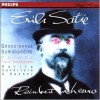 5. Erik Satie (France; b.1866 d.1925) Gymnopediés: The Parisian Avant-Garde composer/Piano maestro Erik Satie practically invented minimalism and ambient music in 1888 when he wrote Gymnopediés, a series of tone poems on piano creating notes that were placed rather than played. The melodies of these pieces are at times fractured, yet with an accessibility that was years ahead of anything being played at the time. Satie looked at the counterparts of music not just as harmonies and melodies but as tools – he was a sound constructer, it wasn’t so much about the piece as a whole but about the resonance and timbre of his phrasing. He is quoted as describing himself as a “phonometrician” or “someone who measures sounds.” His influence today is immeasurable and can be heard in numerous artists from Brian Eno to Radiohead.
5. Erik Satie (France; b.1866 d.1925) Gymnopediés: The Parisian Avant-Garde composer/Piano maestro Erik Satie practically invented minimalism and ambient music in 1888 when he wrote Gymnopediés, a series of tone poems on piano creating notes that were placed rather than played. The melodies of these pieces are at times fractured, yet with an accessibility that was years ahead of anything being played at the time. Satie looked at the counterparts of music not just as harmonies and melodies but as tools – he was a sound constructer, it wasn’t so much about the piece as a whole but about the resonance and timbre of his phrasing. He is quoted as describing himself as a “phonometrician” or “someone who measures sounds.” His influence today is immeasurable and can be heard in numerous artists from Brian Eno to Radiohead.
For further exploration: Another Jive Time favorite is Sergei Prokofiev’s score to Shakespeare’s Romeo and Juliet. Written in 1935, the score was originally rejected for it’s experimental nature but has since become one of his most performed compositions. True to its Shakespearian origin, the piece is at once light and comedic, and dark and tragic. Also check out Dimitri Shostakovich’s Suite for Variety Orchestra (famously used in the ballroom scene in Stanley Kubrick’s Eyes Wide Shut), early “chamber jazz” that actually swings a bit. Bartok’s Miraculous Mandarin was inspired by Stravinsky’s Rite of Spring and Petrushka; and it does, indeed, share many similar traits. Last but not least, check out Charles Ives; his fourth symphony, is stunning!
Exploring any genre, especially classical, can be a profoundly personal experience. Use our suggestions along with others’ and you’ll soon find yourself on your own path. We encourage anyone who’s read this far to take many chances; experimenting is easy and affordable since classical LP’s and CD’s are plentiful in thrift store and record store budget bins.
One more tip: Unlike rock, you’ll encounter countless performances of key pieces by each composer. After discovering a few favorites you’ll likely want to compare performances. In the beginning though, we suggest simply sticking to reputable labels such as Deutsch Gramophone, EMI, London, Decca, Philips, RCA and Sony.
Are we forgetting your favorite composer or composition? If so, please share them in the comments field below:


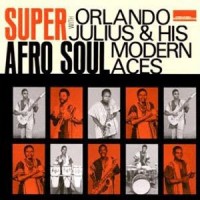
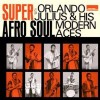 Orlando Julius & His Modern Aces Super Afro Soul (2000) While Fela would become Nigeria’s most recognizable musical icon, Orlando Julius was the country’s first true pop superstar. A major purveyor of hIghlife in the mid-60s, Julius diverted from the rest of the pack by incorporating Stax and Motown influences into his sound, creating an infectious hybrid of highlife and soul. Though revered by many musicians outside of his homeland, Julius never found the massive international audience that he deserved. Fortunately, British label Strut Records sought to remedy this by reissuing this album, which highlights this fertile period of his career.
Orlando Julius & His Modern Aces Super Afro Soul (2000) While Fela would become Nigeria’s most recognizable musical icon, Orlando Julius was the country’s first true pop superstar. A major purveyor of hIghlife in the mid-60s, Julius diverted from the rest of the pack by incorporating Stax and Motown influences into his sound, creating an infectious hybrid of highlife and soul. Though revered by many musicians outside of his homeland, Julius never found the massive international audience that he deserved. Fortunately, British label Strut Records sought to remedy this by reissuing this album, which highlights this fertile period of his career.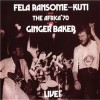 Fela Ransome Kuti & Ginger Baker Live! (1971) Cream drummer Ginger Baker was rock royalty’s earliest adopter of Nigerian music. Building a state of the art recording studio in Lagos in the early 70s, he is widely credited for introducing the music of Nigeria to western audiences. Baker and Fela met in London in the late 60s, resulting in a lifelong personal and musical friendship that would benefit both of them. This recording, made in a London club in 1970, showcases the two icons joining forces to deliver a killer set. Baker’s drumming not surprisingly sometimes gives it a more rock-like feel, making this a unique entry in Fela’s catalog.
Fela Ransome Kuti & Ginger Baker Live! (1971) Cream drummer Ginger Baker was rock royalty’s earliest adopter of Nigerian music. Building a state of the art recording studio in Lagos in the early 70s, he is widely credited for introducing the music of Nigeria to western audiences. Baker and Fela met in London in the late 60s, resulting in a lifelong personal and musical friendship that would benefit both of them. This recording, made in a London club in 1970, showcases the two icons joining forces to deliver a killer set. Baker’s drumming not surprisingly sometimes gives it a more rock-like feel, making this a unique entry in Fela’s catalog.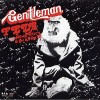 Fela Anikulapo Kuti & Africa 70 Gentleman (1973) When confronted with the bewildering size of Fela’s catalog, many people often ask the same question: “Where should I start?”. Really, pretty much any of his studio albums released between 1971 and 1978 will make anyone a fan for life. But this album is where the template for Fela and Africa 70’s incendiary brand of afrobeat was truly established. Its title track, with Fela’s blistering sax (an instrument that he allegedly learned and mastered in just a few days following the departure of Africa 70 tenor saxophonist, Igo Chico), is worth the price of admission alone.
Fela Anikulapo Kuti & Africa 70 Gentleman (1973) When confronted with the bewildering size of Fela’s catalog, many people often ask the same question: “Where should I start?”. Really, pretty much any of his studio albums released between 1971 and 1978 will make anyone a fan for life. But this album is where the template for Fela and Africa 70’s incendiary brand of afrobeat was truly established. Its title track, with Fela’s blistering sax (an instrument that he allegedly learned and mastered in just a few days following the departure of Africa 70 tenor saxophonist, Igo Chico), is worth the price of admission alone.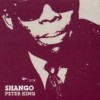 Peter King Shango (1974) A classically trained composer and saxophonist, Peter King is yet another criminally overlooked master of afrobeat. In the 70s, he recorded a handful of records containing a winning mix of jazz, funk, soul, blues, salsa, and, of course, rhythms from his own homeland of Nigeria. This can be heard in all its hip-shaking glory on this record, which unfortunately to date remains his only one to be reissued.
Peter King Shango (1974) A classically trained composer and saxophonist, Peter King is yet another criminally overlooked master of afrobeat. In the 70s, he recorded a handful of records containing a winning mix of jazz, funk, soul, blues, salsa, and, of course, rhythms from his own homeland of Nigeria. This can be heard in all its hip-shaking glory on this record, which unfortunately to date remains his only one to be reissued.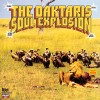 The Daktaris Soul Explosion (1998) You would never know it, but this album was actually recorded in the late-90s by a bunch of guys from Brooklyn, many who would go on to form Antibalas Afrobeat Orchestra soon after its release. So convincing was its vintage sound and packaging, however, that many collectors were sure that they had stumbled upon a long lost afrobeat classic. (One of the evil geniuses behind this ruse was Gabriel Roth, eventual founder and boss of Daptone Records.) Despite the gimmickry, it’s the music that has to deliver in the end, and it does so in spades. Dedicated to Fela, the album kick-started the afrobeat revival. thereby keeping his torch ablaze while proudly carrying it into the 21st century.
The Daktaris Soul Explosion (1998) You would never know it, but this album was actually recorded in the late-90s by a bunch of guys from Brooklyn, many who would go on to form Antibalas Afrobeat Orchestra soon after its release. So convincing was its vintage sound and packaging, however, that many collectors were sure that they had stumbled upon a long lost afrobeat classic. (One of the evil geniuses behind this ruse was Gabriel Roth, eventual founder and boss of Daptone Records.) Despite the gimmickry, it’s the music that has to deliver in the end, and it does so in spades. Dedicated to Fela, the album kick-started the afrobeat revival. thereby keeping his torch ablaze while proudly carrying it into the 21st century.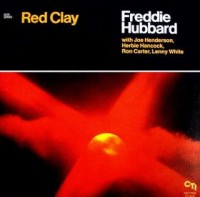
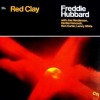
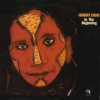 2. Hubert Laws In the Beginning(1974)-A beautiful record by the flautist Hubert laws. Gentle melodies that standout with steady beats. Soft guitars and vibes along with exotic Latin percussion from Airto that make you want to dance in your dreams.
2. Hubert Laws In the Beginning(1974)-A beautiful record by the flautist Hubert laws. Gentle melodies that standout with steady beats. Soft guitars and vibes along with exotic Latin percussion from Airto that make you want to dance in your dreams.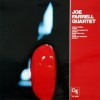 3. Joe Farrell Joe Farrell Quartet (1970)-An outing led by Joe Farrell on reeds and features the guitar of John McLaughin , Jack DeJohnette on drums, bass extraordinaire Dave Holland and Chick Corea on piano. These cats play a set that smolders but never burns out. There are also some more straight ahead tracks to accompany the avant-garde feel of the record. This is an unusual “outside/inside” record for CTI and a pleasant surprise for fusion, free jazz and straight ahead fans alike.
3. Joe Farrell Joe Farrell Quartet (1970)-An outing led by Joe Farrell on reeds and features the guitar of John McLaughin , Jack DeJohnette on drums, bass extraordinaire Dave Holland and Chick Corea on piano. These cats play a set that smolders but never burns out. There are also some more straight ahead tracks to accompany the avant-garde feel of the record. This is an unusual “outside/inside” record for CTI and a pleasant surprise for fusion, free jazz and straight ahead fans alike.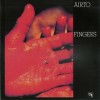 4: Airto Fingers (1973)-Brazilian percussionist/vocalist Airto was a staple on many recordings for CTI, providing a crucial element to the sound. This is his fist record as a leader for CTI. Here we have a hard hitting Brazilian jazz/rock/funk mixture with Flora Purim bringing some additional vocals to accompany Airto. David Amaro brings an array of guitar styles to the mix from bossa nova comping to fuzzed out rock solos. This is some multifaceted music that can’t be put in any box.
4: Airto Fingers (1973)-Brazilian percussionist/vocalist Airto was a staple on many recordings for CTI, providing a crucial element to the sound. This is his fist record as a leader for CTI. Here we have a hard hitting Brazilian jazz/rock/funk mixture with Flora Purim bringing some additional vocals to accompany Airto. David Amaro brings an array of guitar styles to the mix from bossa nova comping to fuzzed out rock solos. This is some multifaceted music that can’t be put in any box.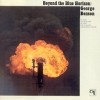 5. George Benson Beyond the Blue Horizon (1971) – A rare, stripped down CTI soul-jazz record from the great guitarist George Benson. Clarence Palmer’s greasy organ licks accentuate the subtle mastery of Jack DeJohnette on drums, bassist Ron Carter plucks the upright bass with much funk. Dig the opening: a hip and fresh rendition of Miles Davis’ ultra cool cut “So What”.
5. George Benson Beyond the Blue Horizon (1971) – A rare, stripped down CTI soul-jazz record from the great guitarist George Benson. Clarence Palmer’s greasy organ licks accentuate the subtle mastery of Jack DeJohnette on drums, bassist Ron Carter plucks the upright bass with much funk. Dig the opening: a hip and fresh rendition of Miles Davis’ ultra cool cut “So What”.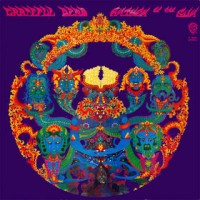
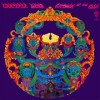 1. Anthem of the Sun (1967) Many fans of ’60s garage rock (this writer included) love the Dead’s raw and hyperactive debut LP (
1. Anthem of the Sun (1967) Many fans of ’60s garage rock (this writer included) love the Dead’s raw and hyperactive debut LP (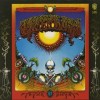 2. Aoxomoxoa (1969) Originally to be titled, “Earthquake Country”, this is the Dead’s most atmospheric record. Folksy, quiet, and dark, its songs are subtle and sometimes don’t even seem like songs at all, more like stream-of-consciousness sound poems. On shaky ground with the rest of the band during the recording sessions, Pigpen and Bob Weir’s presence is minimal, making this mostly Garcia’s show. Still, his creaky vocals, coupled with Robert Hunter’s surrealistic lyrics, make for a record that is wonderfully creepy and bizarre.
2. Aoxomoxoa (1969) Originally to be titled, “Earthquake Country”, this is the Dead’s most atmospheric record. Folksy, quiet, and dark, its songs are subtle and sometimes don’t even seem like songs at all, more like stream-of-consciousness sound poems. On shaky ground with the rest of the band during the recording sessions, Pigpen and Bob Weir’s presence is minimal, making this mostly Garcia’s show. Still, his creaky vocals, coupled with Robert Hunter’s surrealistic lyrics, make for a record that is wonderfully creepy and bizarre.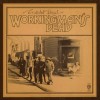 3. Workingman’s Dead (1970) This is the first release in a pair of career and genre-defining country rock albums. For many, its follow-up,
3. Workingman’s Dead (1970) This is the first release in a pair of career and genre-defining country rock albums. For many, its follow-up, 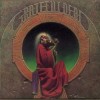 4. Blues for Allah (1975) The Dead released three studio albums on their short-lived record label in the mid-70s: Wake of the Flood, From the Mars Hotel, and this one. All entries in this “Grateful Dead Records Trilogy” show the band’s growing jazz and fusion influences, and Blues for Allah represents the culmination of this productive experimentation. The Dead had been on hiatus a year before the LP’s recording sessions began, and this seems to have done them a world of good. Pigpen is long gone at this point, but keyboardist Keith Godcheaux is on fire and contributes some of the best work he’s done since joining the band. (And thankfully, the presence of his wife/backing-vocalist, the much maligned Donna, is kept to a minimum.) Featuring the “Help on the Way-Slipknot-Franklin’s Tower” song cycle, a live staple for the rest of the Dead’s career, this is the closest the Dead ever came to bottling their onstage lightning.
4. Blues for Allah (1975) The Dead released three studio albums on their short-lived record label in the mid-70s: Wake of the Flood, From the Mars Hotel, and this one. All entries in this “Grateful Dead Records Trilogy” show the band’s growing jazz and fusion influences, and Blues for Allah represents the culmination of this productive experimentation. The Dead had been on hiatus a year before the LP’s recording sessions began, and this seems to have done them a world of good. Pigpen is long gone at this point, but keyboardist Keith Godcheaux is on fire and contributes some of the best work he’s done since joining the band. (And thankfully, the presence of his wife/backing-vocalist, the much maligned Donna, is kept to a minimum.) Featuring the “Help on the Way-Slipknot-Franklin’s Tower” song cycle, a live staple for the rest of the Dead’s career, this is the closest the Dead ever came to bottling their onstage lightning.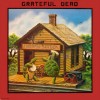 5. Terrapin Station (1977) In the late ’70s, the Dead signed with Arista Records, and the label would release the remainder of the band’s studio output during the band’s active existence. Many of these records are riddled with half-baked ideas, unsuccessful attempts at then in-vogue musical styles, and dated production values. Terrapin Station is certainly not immune to these pitfalls, but there’s something very interesting about watching a band, one who for many years avoided the usual machinations of the music industry, try to reinvent themselves as an FM-friendly arena rock act. Even more interesting is the fact that here the Dead sometimes threaten to pull this off! Though dated and overproduced, Terrapin Station is probably the band’s strongest later studio effort, and it still retains a certain charm. Unfortunately, the same cannot be said about the two records that came after it, Shakedown Street and Go to Heaven.
5. Terrapin Station (1977) In the late ’70s, the Dead signed with Arista Records, and the label would release the remainder of the band’s studio output during the band’s active existence. Many of these records are riddled with half-baked ideas, unsuccessful attempts at then in-vogue musical styles, and dated production values. Terrapin Station is certainly not immune to these pitfalls, but there’s something very interesting about watching a band, one who for many years avoided the usual machinations of the music industry, try to reinvent themselves as an FM-friendly arena rock act. Even more interesting is the fact that here the Dead sometimes threaten to pull this off! Though dated and overproduced, Terrapin Station is probably the band’s strongest later studio effort, and it still retains a certain charm. Unfortunately, the same cannot be said about the two records that came after it, Shakedown Street and Go to Heaven.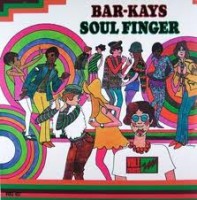
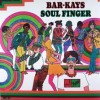 1. The Bar-Kays Soul Finger (1967) Though there are other great tunes in this assortment of instrumentals, its title track, with its thumping bass and blasting horns, is deservedly the standout. Even the record’s unavoidable association with one of the greatest tragedies in Soul music history—it’s the only one the original lineup recorded before three of its members perished with Otis Redding in a plane crash—can’t detract from its joyous groove.
1. The Bar-Kays Soul Finger (1967) Though there are other great tunes in this assortment of instrumentals, its title track, with its thumping bass and blasting horns, is deservedly the standout. Even the record’s unavoidable association with one of the greatest tragedies in Soul music history—it’s the only one the original lineup recorded before three of its members perished with Otis Redding in a plane crash—can’t detract from its joyous groove.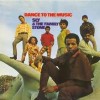 2. Sly and the Family Stone Dance to the Music (1968) This sophomore effort by the Bay Area psychedelic soulsters is where they really find their footing. Much more of a group effort than Sly’s later work, its melding of fuzzed-out guitar, stinging brass, life-affirming vocals, and the stellar basswork of one of funk’s greatest innovators, Larry Graham, ushered in a new era.
2. Sly and the Family Stone Dance to the Music (1968) This sophomore effort by the Bay Area psychedelic soulsters is where they really find their footing. Much more of a group effort than Sly’s later work, its melding of fuzzed-out guitar, stinging brass, life-affirming vocals, and the stellar basswork of one of funk’s greatest innovators, Larry Graham, ushered in a new era.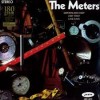 3. The Meters (1969) – No other city is as deserving of the title “The Cradle of Funk” as New Orleans. In the late ’60s, literally hundreds of artists in that city cooked up potent stews of tight grooves and fat beats, and the Meters were the undisputed head chefs. Their Allen Toussaint and Marshall Sehorn-produced debut features a smoking collection of instrumentals, including the original version of “Cissy Strut”, now a Funk standard.
3. The Meters (1969) – No other city is as deserving of the title “The Cradle of Funk” as New Orleans. In the late ’60s, literally hundreds of artists in that city cooked up potent stews of tight grooves and fat beats, and the Meters were the undisputed head chefs. Their Allen Toussaint and Marshall Sehorn-produced debut features a smoking collection of instrumentals, including the original version of “Cissy Strut”, now a Funk standard.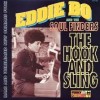 4. Eddie Bo and the Soul Finders The Hook and Sling (1997) Elsewhere in the Crescent City, this prolific national treasure, whose output spanned from the early 50s to just a few months before his death in 2009, unleashed one of early Funk’s catchiest numbers, “The Hook and Sling”—a sizable hit on the R&B charts in 1969. Every bit as much of an innovator as his peers, Bo unfortunately remained in their shadows for most of his career. Even stranger, he never managed to cut a full-length LP during this, his most important, period. This 1997 compilation serves as the next best thing.
4. Eddie Bo and the Soul Finders The Hook and Sling (1997) Elsewhere in the Crescent City, this prolific national treasure, whose output spanned from the early 50s to just a few months before his death in 2009, unleashed one of early Funk’s catchiest numbers, “The Hook and Sling”—a sizable hit on the R&B charts in 1969. Every bit as much of an innovator as his peers, Bo unfortunately remained in their shadows for most of his career. Even stranger, he never managed to cut a full-length LP during this, his most important, period. This 1997 compilation serves as the next best thing.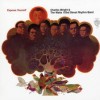 5. Charles Wright and the Watts 103rd Street Rhythm Band Express Yourself (1970) Seminal release by Charles Wright and the best incarnation of the Watts 103rd Street Rhythm Band.
5. Charles Wright and the Watts 103rd Street Rhythm Band Express Yourself (1970) Seminal release by Charles Wright and the best incarnation of the Watts 103rd Street Rhythm Band. 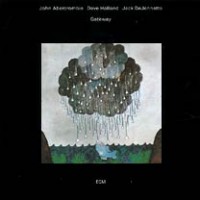
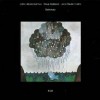 1. Gateway Gateway (1975) Guitar trio set featuring John Abercrombie on guitar, the great Jack DeJohnette behind the drums, and Dave Holland on bass. This record covers everything from post-bop swing to abstract, sonic explorations. This is a criminally underrated guitar trio record, if not one of the best releases from ECM.
1. Gateway Gateway (1975) Guitar trio set featuring John Abercrombie on guitar, the great Jack DeJohnette behind the drums, and Dave Holland on bass. This record covers everything from post-bop swing to abstract, sonic explorations. This is a criminally underrated guitar trio record, if not one of the best releases from ECM.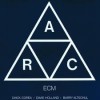 2. Chick Corea , Dave Holland, Barry Altschul ARC (1971) Chick Corea on piano with Dave Holland on bass and Barry Altschul on percussion – Any fans of the classic piano trio should study this record, both lyrical and dissonant; it bridges the gap between free improv and structure.
2. Chick Corea , Dave Holland, Barry Altschul ARC (1971) Chick Corea on piano with Dave Holland on bass and Barry Altschul on percussion – Any fans of the classic piano trio should study this record, both lyrical and dissonant; it bridges the gap between free improv and structure.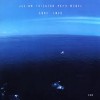 3. Julian Priester Love, Love (1973) An “electrocoustic” jazz/ funk session with tight horn arrangements, wah guitars, low-fi bass lines and eerie synth swells mingled with Latin flavored piano runs. This is a modern sounding, progressive record that still sounds fresh today-a Jive Time favorite.
3. Julian Priester Love, Love (1973) An “electrocoustic” jazz/ funk session with tight horn arrangements, wah guitars, low-fi bass lines and eerie synth swells mingled with Latin flavored piano runs. This is a modern sounding, progressive record that still sounds fresh today-a Jive Time favorite.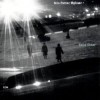 4. Nils Petter Molvær Solid Ether (2000) This is trumpet player Nils Petter Molvær’s second release by this project ; a stew of trumpet swirls, loops, guitars, and various electronics with programmed beats intertwined with live drums, along with gentle female vocal interludes. There’s also some sampling from DJ Strangefruit .
4. Nils Petter Molvær Solid Ether (2000) This is trumpet player Nils Petter Molvær’s second release by this project ; a stew of trumpet swirls, loops, guitars, and various electronics with programmed beats intertwined with live drums, along with gentle female vocal interludes. There’s also some sampling from DJ Strangefruit .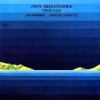 5. John Abercrombie Timeless (1975) Another trio record featuring John Abercrombie and Jack DeJohnette, only this time Jan Hammer on keyboards joins the fold. I had to include this spaced out fusion masterpiece. Frenetic drumming and fuzzed out guitar and organ washes create psychedelic soundscapes with funky breaks alongside tender acoustic guitar/piano duets. No Miami Vice theme here.
5. John Abercrombie Timeless (1975) Another trio record featuring John Abercrombie and Jack DeJohnette, only this time Jan Hammer on keyboards joins the fold. I had to include this spaced out fusion masterpiece. Frenetic drumming and fuzzed out guitar and organ washes create psychedelic soundscapes with funky breaks alongside tender acoustic guitar/piano duets. No Miami Vice theme here.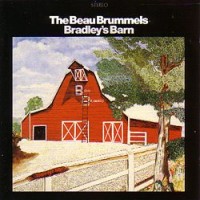
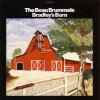 1. Bradley’s Barn Beau Brummels (1968) This release by undervalued San Francisco folk rockers, which arrived in stores just a few short weeks after Sweetheart of the Rodeo, is in some ways more successful than its competition. Much of this can be attributed to Sal Valentino’s gritty vocals and the impeccable picking of some ace Nashville sessioneers.
1. Bradley’s Barn Beau Brummels (1968) This release by undervalued San Francisco folk rockers, which arrived in stores just a few short weeks after Sweetheart of the Rodeo, is in some ways more successful than its competition. Much of this can be attributed to Sal Valentino’s gritty vocals and the impeccable picking of some ace Nashville sessioneers.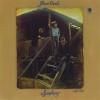 2. Goose Creek Symphony Established 1970 (1970) On their debut album, this Arizona outfit conveys a laid-back and goofy stoner vibe, which somewhat belies its virtuosic musicianship. Its side two opener, “Talk About Goose Creek and Other Important Places”, is one of country rock’s great psychedelic rave-ups.
2. Goose Creek Symphony Established 1970 (1970) On their debut album, this Arizona outfit conveys a laid-back and goofy stoner vibe, which somewhat belies its virtuosic musicianship. Its side two opener, “Talk About Goose Creek and Other Important Places”, is one of country rock’s great psychedelic rave-ups.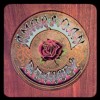 3. Grateful Dead American Beauty (1970) Which Grateful Dead album most typifies country rock is open to debate; clearly, it’s a toss-up between Workingman’s Dead and their next album, American Beauty. But in the end the latter achieves this distinction, if only by a slim margin. Featuring Jerry Garcia’s sparkling pedal steel guitar and some of the band’s best ever harmonies, the Dead would never sound this great in the studio again.
3. Grateful Dead American Beauty (1970) Which Grateful Dead album most typifies country rock is open to debate; clearly, it’s a toss-up between Workingman’s Dead and their next album, American Beauty. But in the end the latter achieves this distinction, if only by a slim margin. Featuring Jerry Garcia’s sparkling pedal steel guitar and some of the band’s best ever harmonies, the Dead would never sound this great in the studio again.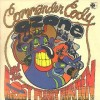 4. Commander Cody and His Lost Planet Airmen Lost in the Ozone (1971) Looking back almost as much as it looked forward, this raucous album introduced elements of rockabilly and boogie-woogie into the country rock mix. Commander Cody would record some more great albums, but this remains his definitive statement.
4. Commander Cody and His Lost Planet Airmen Lost in the Ozone (1971) Looking back almost as much as it looked forward, this raucous album introduced elements of rockabilly and boogie-woogie into the country rock mix. Commander Cody would record some more great albums, but this remains his definitive statement.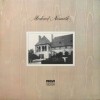 5. Michael Nesmith And the Hits Just Keep on Comin’ (1972) The Monkees’ hippest member recorded some of the best music in the country rock canon. But this minimalist outing, which features a rendition of “Different Drum” that’s superior to Linda Ronstadt’s version, is a true standout.
5. Michael Nesmith And the Hits Just Keep on Comin’ (1972) The Monkees’ hippest member recorded some of the best music in the country rock canon. But this minimalist outing, which features a rendition of “Different Drum” that’s superior to Linda Ronstadt’s version, is a true standout.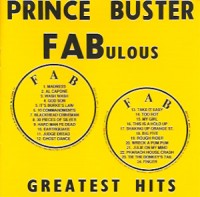
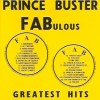 1. Prince Buster: Fabulous Greatest Hits (1980) – Though acquiring a popularity in the UK that at its peak rivaled the Beatles’s, Prince Buster never really established a large following in the US. Tracking down his one uneven RCA release from 1967 is a worthwhile endeavor, but this 1980 British comp is where all newcomers should start. All songs here were recorded in the mid to late ’60s, and many of them would serve as the blueprint for the 2 Tone movement that swept the UK a decade or so later.
1. Prince Buster: Fabulous Greatest Hits (1980) – Though acquiring a popularity in the UK that at its peak rivaled the Beatles’s, Prince Buster never really established a large following in the US. Tracking down his one uneven RCA release from 1967 is a worthwhile endeavor, but this 1980 British comp is where all newcomers should start. All songs here were recorded in the mid to late ’60s, and many of them would serve as the blueprint for the 2 Tone movement that swept the UK a decade or so later.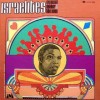 2. Desmond Dekker and the Aces Israelites (1969) “The Jamaican Smokey Robinson’s” single “Israelites” represents the only time when rocksteady cracked the US top 100. When it did, MCA rushed to cobble together this collection of songs, some of which by then were almost two years old. It’s still a fantastic showcase for some of Dekker’s best work. He’s at the top of his game here, and so is his backing band.
2. Desmond Dekker and the Aces Israelites (1969) “The Jamaican Smokey Robinson’s” single “Israelites” represents the only time when rocksteady cracked the US top 100. When it did, MCA rushed to cobble together this collection of songs, some of which by then were almost two years old. It’s still a fantastic showcase for some of Dekker’s best work. He’s at the top of his game here, and so is his backing band.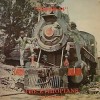 3. The Ethiopians Engine ’54: Let’s Ska and Rocksteady (1968) Rocksteady was the ideal vehicle for the vocal group, and as Jamaican vocal groups went, they didn’t get much better than the Ethiopians. Don’t let the “ska” in the title fool you; most of this is quintessential rocksteady, some of the best ever recorded.
3. The Ethiopians Engine ’54: Let’s Ska and Rocksteady (1968) Rocksteady was the ideal vehicle for the vocal group, and as Jamaican vocal groups went, they didn’t get much better than the Ethiopians. Don’t let the “ska” in the title fool you; most of this is quintessential rocksteady, some of the best ever recorded.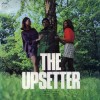 4. The Upsetters The Upsetter (1969) It’s difficult to figure out to whom this album should really be credited. One should know, however, that a young Lee “Scratch” Perry produced it, and whenever this eccentric mastermind is involved, things become, well… complicated. Featuring the work of a cadre of different musicians and vocalists, it’s a surprisingly cohesive late rocksteady record, one where the organ figures more prominently than the work of others at the time. It also hints at the dub revolution, of which Perry would be a prime architect a few years later.
4. The Upsetters The Upsetter (1969) It’s difficult to figure out to whom this album should really be credited. One should know, however, that a young Lee “Scratch” Perry produced it, and whenever this eccentric mastermind is involved, things become, well… complicated. Featuring the work of a cadre of different musicians and vocalists, it’s a surprisingly cohesive late rocksteady record, one where the organ figures more prominently than the work of others at the time. It also hints at the dub revolution, of which Perry would be a prime architect a few years later.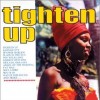 5. Various Artists Tighten Up: Volume 1 (1969) Music from Jamaica continued to capture the hearts and minds of young UK listeners in the late ’60s, but the record industry was slow to profit from its popularity. This Trojan Records “cash-in” comp. spawned a series that would become an institution and number well into the double digits before ending its run. Its first volume defined the musical tastes of the Skinhead movement (before it was co-opted by nationalist and racist thugs). Heavy on soul covers, a few of its tracks denote a distinct progression towards reggae, but most represent some last great moments from Rocksteady’s waning days.
5. Various Artists Tighten Up: Volume 1 (1969) Music from Jamaica continued to capture the hearts and minds of young UK listeners in the late ’60s, but the record industry was slow to profit from its popularity. This Trojan Records “cash-in” comp. spawned a series that would become an institution and number well into the double digits before ending its run. Its first volume defined the musical tastes of the Skinhead movement (before it was co-opted by nationalist and racist thugs). Heavy on soul covers, a few of its tracks denote a distinct progression towards reggae, but most represent some last great moments from Rocksteady’s waning days.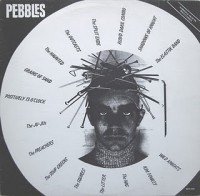
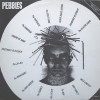 1. Pebbles – Conceived and created in Australia only a few years after the original Nuggets, this series focused on more raw and obscure (though not entirely unknown) acts from the US. Numerous volumes and offshoot series of widely varying quality proliferated through the 70’s and 80’s, but volumes 1-6 are pretty darn solid.
1. Pebbles – Conceived and created in Australia only a few years after the original Nuggets, this series focused on more raw and obscure (though not entirely unknown) acts from the US. Numerous volumes and offshoot series of widely varying quality proliferated through the 70’s and 80’s, but volumes 1-6 are pretty darn solid.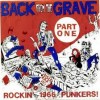 2. Back From The Grave – One of the few series worthy of the “60’s Garage Rock” classification, the US bands represented here are young, fast, raw, and sometimes very poorly recorded, which undoubtedly adds to its authenticity.
2. Back From The Grave – One of the few series worthy of the “60’s Garage Rock” classification, the US bands represented here are young, fast, raw, and sometimes very poorly recorded, which undoubtedly adds to its authenticity.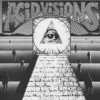 3. Acid Visions – Regional garage and psych compilations are very common. This one focuses on the Lone Star State, which produced a surprisingly diverse and consistently high quality array of sounds in the ’60s. The third and final volume focuses on female artists, a very underrepresented demographic in this male-dominated realm.
3. Acid Visions – Regional garage and psych compilations are very common. This one focuses on the Lone Star State, which produced a surprisingly diverse and consistently high quality array of sounds in the ’60s. The third and final volume focuses on female artists, a very underrepresented demographic in this male-dominated realm.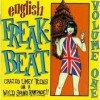 4. English Freakbeat – Since suburban two-car garages are not as common in England, perhaps it was inevitable that a moniker for similar music from the British Isles would be invented, and “Freakbeat” seems just as apt as any. Though the bands on these five LPs share many commonalities with their American garage brethren, a rawer and more purist blues sensibility often dominates.
4. English Freakbeat – Since suburban two-car garages are not as common in England, perhaps it was inevitable that a moniker for similar music from the British Isles would be invented, and “Freakbeat” seems just as apt as any. Though the bands on these five LPs share many commonalities with their American garage brethren, a rawer and more purist blues sensibility often dominates.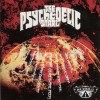 5. Rubble – While this Anglocentric series covers the Freakbeat sound like the series mentioned above, its emphasis is on the more cerebral and whimsical Psych-Pop of the late ’60s British and European scenes. Though spotty at times, many installments in this twenty volume series have numerous great tracks.
5. Rubble – While this Anglocentric series covers the Freakbeat sound like the series mentioned above, its emphasis is on the more cerebral and whimsical Psych-Pop of the late ’60s British and European scenes. Though spotty at times, many installments in this twenty volume series have numerous great tracks.